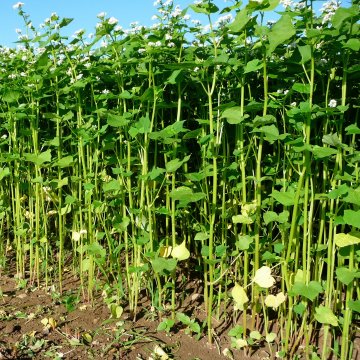Explore our blog featuring articles about farming and irrigation tips and tricks!
Using Buckwheat For Hay

By Raylene Nickel
While most often harvested for grain, fast-growing buckwheat also offers a source of forage when conditions present limited feed supplies and an extremely short growing season.
“Buckwheat is a particularly good fit for producers who typically plant crops in the spring for forage but, for some reason, are prevented from a timely planting,” says Thomas Bjorkman, horticulturist at Cornell University.
“Because buckwheat likes warm growing conditions, you can plant it in June and July in the northern tier of states,” he says. “Six weeks later, you can harvest a forage similar in quality to a mix of grass and alfalfa hay.”
Buckwheat’s rapid growth also presents flexible cropping options. “If there’s soil moisture left after harvesting either winter or spring wheat, you’ll still have time to grow buckwheat,” Bjorkman says. “If buckwheat is planted in June for late-August harvest, then oats or triticale can be direct-drilled afterward for fall harvest.
Stay up to date on all T-L news and get alerts on special pricing!


